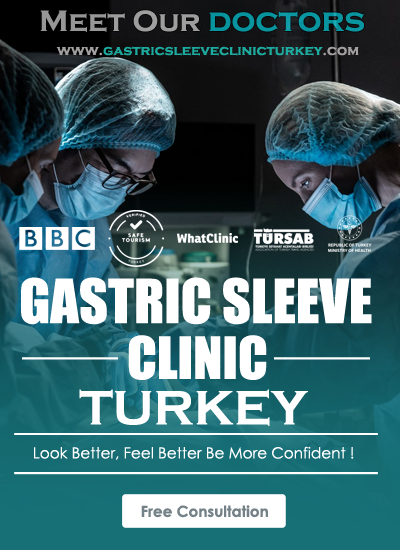How do I go for gastric balloon treatment in Turkey?
Calculate Your Cost / Price
Nausea and vomiting are very common in the first seven to ten days after gastric balloon insertion and this is simply because your stomach isn't used to having it there.
What should I do for gastric balloon treatment in Turkey?
Gastric Balloon Treatment Antalya, Gastric Balloon Treatment Turkey
-
How to prepare for gastric balloon?
Before insertion of the gastric balloon, you must fast from food and drinks for 12 hours. When the gastric balloon is to be removed, you must start on a fluid-only diet 48 hours beforehand. This means no solid food at all.
-
How do you qualify for gastric balloon?
Patients may be eligible for a gastric balloon if they have a BMI between 30 and 40, and they haven't been able to lose weight and keep it off with other weight-loss plans.
-
What to expect when you get a gastric balloon?
Pain and nausea affect about one-third of people soon after insertion of an intragastric balloon. However, these symptoms usually only last for a few days after balloon placement. Although rare, serious side effects may occur after intragastric balloon placement.
-
What do I eat in a day with a gastric balloon?
Continue to eat 3 regular meals each day and try not to leave more than 3-4 hours between meals.
EAT FIRST -Protein (meat, fish, poultry, eggs, beans, pulses)
EAT SECOND- Vegetables and salad.
EAT LAST - Carbohydrates (bread, rice, potato, pasta, grains)
-
How to sleep with a gastric balloon?
Once you have passed the initial few weeks following the gastric balloon procedure, you should be able to sleep normally. This means you can sleep on your back or on your side. Sleeping in these positions allows your body's natural digestive processes to function while you rest.
-
Can you eat bread with a gastric balloon?
Avoid anything doughy such as bread or chapattis as these can stick to the balloon. You can gradually start to include the 'caution foods'. Continue to drink between meals only and avoid sugary or fizzy drinks as before. Still aim for about 2 litres (3½ pints) each day.
-
How quickly do you lose weight with gastric balloon?
Losing Weight with a Gastric Balloon
You are likely to lose weight quickly, especially in the first three to four months of living with the gastric balloon. Typically, people lose about 10 to 15% of their body weight by the time the six-month program is complete.
-
Can you drink coffee with a gastric balloon?
This includes any fluid such as water, juices, milk, squash and soups. Tea and coffee are also allowed though should not be your main source of fluids. You should avoid drinks with too much gas. Fizzy drinks can cause a great deal of discomfort with a gastric balloon.
-
Can I fly with a gastric balloon?
Yes. Flying with a gastric balloon is perfectly fine. It will not burst or rupture on a commercial flight. Once you've recovered from the initial symptoms of having a placement you will be able to fly and enjoy your holiday as normal.
-
How long do you feel sick after gastric balloon?
Nausea and vomiting are very common in the first seven to ten days after gastric balloon insertion and this is simply because your stomach isn't used to having it there.
-
Is gastric balloon a good idea?
The gastric balloon procedure may be particularly useful for people considered too overweight to undergo vital surgery. The use of the balloon to successfully reduce weight prior to surgery can also help to reduce the risks associated with surgical procedures on overweight patients.
-
What happens if the gastric balloon pops?
Bowel obstruction and perforation are the most significant concerns if your balloon bursts. Symptoms such as severe abdominal pain, vomiting, or difficulty swallowing should never be ignored, as they may indicate a burst balloon.
-
Do you feel hungry after gastric balloon?
Approximately 90% of people have no appetite at all after the insertion of an intragastric balloon. In the first 10 days you will be restricted to a liquid diet, but most people do not feel hungry!
-
Who cannot have a gastric balloon?
Who is not a candidate for gastric balloon? Gastric balloon is not qualified to pregnant women, long-term cortisone users, those who are undergoing cancer treatment or those who have recently had cancer treatment.
-
How painful is a gastric balloon?
About one-third of patients have pain, nausea or discomfort in the first few days. Over-the-counter pain medication usually helps. Weight loss: You may not feel hungry the first couple of weeks, leading to rapid weight loss.
-
Can your body reject a gastric balloon?
It is important to remember that a BIB gastric balloon is a foreign object, meaning your body will attempt to reject it.
-
What is the age limit for gastric balloon?
To be eligible for gastric balloon, you must: Be at least 13 years old. Have a body mass index (BMI) ≥30 and ≤40 kg/m2. Have tried other weight-loss programs, such as a supervised diet or exercise regimen.

Gastric Balloon Treatment Antalya, Gastric Balloon Treatment Turkey, Gastric Balloon Procedure All Inclusive in Turkey, Aesthetic Travel Antalya, Gastric Sleeve Travel Antalya, Gastric Balloon Travel Antalya, Gastric Bypass Travel Antalya, Aesthetic Travel Turkey, Gastric Sleeve Travel Turkey, Gastric Balloon Travel Turkey, Gastric Bypass Travel Turkey, Gastric Sleeve in Antalya, Gastric Balloon in Antalya, Gastric Sleeve in Turkey, Gastric Balloon in Turkey, Obesity Travel Antalya, Obesity Travel Turkey, Gastric Sleeve Antalya, Bariatric Antalya, Gastric Bypass Antalya, Mini Gastric Bypass Antalya, Gastric Balloon Antalya, Gastric Sleeve Price Turkey, 2024 Gastric Sleeve Price Antalya, 2024 Gastric Sleeve Price Turkey, 2024 Mini Gastric Bypass Price Turkey, 2024 Gastric Balloon Price Turkey, 2024 Mini Gastric Bypass Price Antalya, 2024 Gastric Balloon Price Antalya
FQ About Gastric Balloon Clinic in Antalya / Turkey
Stress gastritis occurs due to physical or emotional stress, which increases stomach acid production and irritates the stomach lining. Its common in critically ill patients or those undergoing significant emotional distress. Treatment includes stress management, acid-reducing medications, and dietary adjustments.
The cost of lap band surgery varies by location and clinic, but it typically ranges between £1,450 and £8,000 in the UK. The procedure is less invasive and has a quicker recovery time than other bariatric surgeries, though it may require periodic adjustments.
The intragastric balloon is the first of the endoscopic techniques which have the potential to be important means of achieving weight loss without the need for surgery. This is the only endoscopic technique which currently we offer at CBS. But the field of endoscopic techniques for weight loss is a rapidly developing one and further techniques could be available in the not-too-distant future. The intragastric balloon is a day procedure. You are very lightly anaesthetised during the procedure as it can be... +More
Similar to the gastric balloon, the stomach balloon is used for weight loss by physically limiting the stomach's capacity. It is available in the UK both privately and through the NHS in some cases. The balloon is typically left in place for six months, after which it is removed. During this time, patients follow a strict diet to maximize weight loss.
The diet after sleeve gastrectomy is crucial for recovery and long-term success. Patients start with a liquid diet, then gradually progress to pureed foods, soft foods, and eventually solid meals over several weeks. A focus on high-protein, low-carbohydrate, and nutrient-dense foods helps maintain weight loss and avoid deficiencies. Hydration and vitamin supplementation are also important aspects of the post-sleeve diet.
After around 7 to 8 weeks you should be able to resume a normal solid food diet. Your gastric sleeve will allow you to eat almost any type or texture of food. You should aim for three well balanced meals each day.
In medical terms, GI stands for Gastrointestinal, referring to the digestive system, which includes the stomach, intestines, and other associated organs. GI disorders encompass a wide range of conditions that affect digestion, including gastritis, irritable bowel syndrome (IBS), and gastrointestinal cancers.
The prognosis for gastrointestinal (GI) cancer depends on the type and stage of cancer at diagnosis. Early-stage GI cancers, including stomach, colon, and esophageal cancers, have better survival rates when treated with surgery, chemotherapy, or radiation. Advanced-stage cancers are more difficult to treat and often require palliative care.
Mini Gastric Bypass Procedure: Also known as Single Anastamosis or Omega Loop gastric bypass. The procedure takes 1 1.5 hours under a general anaesthetic. Clients usually spend two nights in hospital although occasionally clients do go home after one day. Weight loss begins immediately as your metabolism is improved. You'll eat a soft diet between weeks three and four after surgery. During this phase, you'll continue to prioritize protein, but you'll be able to get the nutrient from foods including scrambled... +More
A partial gastrectomy is a surgical procedure where part of the stomach is removed, often due to stomach cancer, ulcers, or other severe gastric issues. This procedure reduces the size of the stomach, leading to reduced food intake, but it also requires significant dietary changes after surgery.
When the stomach is taken out through a procedure like gastrectomy, the patient must adapt to a new lifestyle that involves eating smaller, more frequent meals and relying on supplements for essential nutrients. This surgery is performed to treat conditions like stomach cancer, ulcers, or severe obesity.
Pages
-
£ 1580£ 1450GASTRIC BALLOON PROCEDURE PACKAGE
Give a call to learn more about what’s included and to come up with a tailored plan if you need unique accommodations that are not listed below.
- Airport
- Hotel
- Hospital transfer
- The balloon is placed via endoscopy, the procedure takes 15-20 minutes and you are discharged after 2-3 hours. It is enough to stay here for 1 night.
- Blood samples & x-rays
- 5 year follow up
-
£ 2750£ 2550GASTRIC SLEEVE PACKAGE
GASTRIC SLEEVE PACKAGE COST TURKEY / ANTALYA
Give a call to learn more about what’s included and to come up with a tailored plan if you need unique accommodations that are not listed below.- Airport
- Hotel
- Hospital transfer
- 4 day stay at hospital
- Blood samples & x-rays
- 5 year follow up
-
£ 3100£ 2900MINI GASTRIC BYPASS PACKAGE
MINI GASTRIC BYPASS PACKAGE TURKEY
Give a call to learn more about what’s included and to come up with a tailored plan if you need unique accommodations that are not listed below.- Airport
- Hotel
- Hospital transfer
- 4 day stay at hospital
- Blood samples & x-rays
- 5 year follow up












